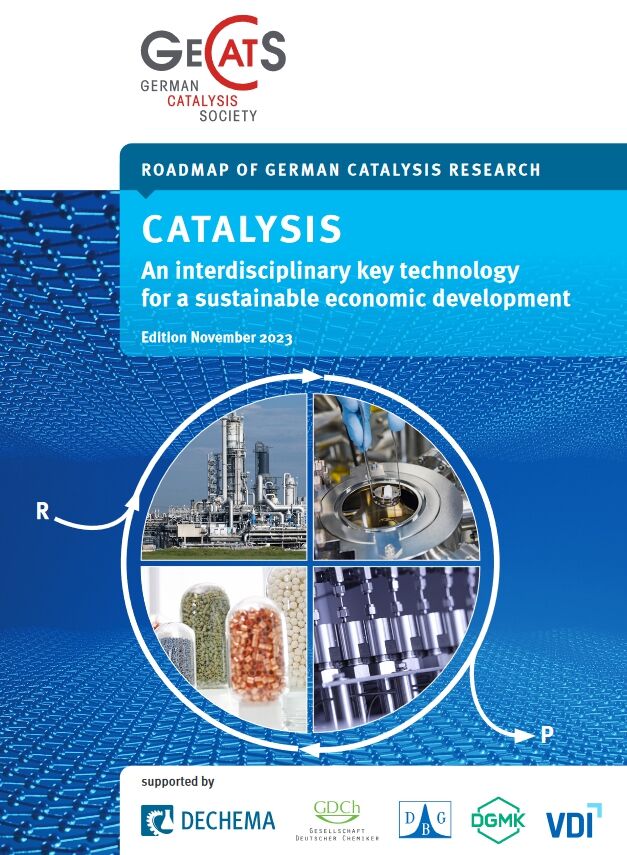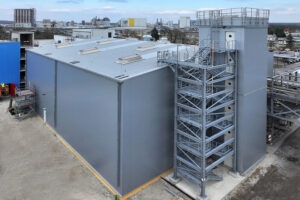The Sustainable Development Goals „Affordable and clean energy“ and „Sustainable consumption and production“ are directly related to catalytic technologies such as electrocatalytic water splitting for the production of hydrogen using solar and wind energy or the sustainable synthesis of fuels from carbon dioxide or of functional chemicals from renewable raw materials. The goals of closed material cycles or a carbon-neutral chemical industry will also not be achievable without catalysis. However, world nutrition, health, clean water and climate-neutral action are also areas in which catalysis is essential and will become increasingly important in the future.
Catalysis research stands out as an interdisciplinary field that benefits from many related disciplines and directly provides essential contributions to them. For example, materials science for the development of new stable catalyst materials, engineering sciences for the development of new reactors and reactor concepts and biology for enzyme research all play a decisive role in advancing the field of catalysis.
Roadmap to promote the development of catalysis
In order to promote the development of catalysis against the background of the current challenges for sustainable development, this Roadmap of German Catalysis Research describes the medium-term needs for research areas and goals with a view to longer-term visions. The Roadmap of German Catalysis Research is divided into the following six chapters:
- 1. Energy transition and hydrogen economy:
The first chapter deals with the role of catalysis in the energy transition and the hydrogen economy. Catalysts can be used to convert sustainable but volatile electrical energy sources, such as wind or solar energy, into chemical energy. Catalysis thus enables on the one hand the storage of these volatile forms of energy, e.g. in hydrogen or other chemical energy carriers (e-fuels, biofuels, LOHCs, etc.), but also the use of electrical energy in chemical production and for material use. - 2. From fossil raw materials to a cycle of carbon resources:
This chapter describes the development goals in catalysis for a sustainable transformation of today’s linear chemical industry with the aim of closed carbon cycles. Catalysts are essential to enable selective chemo-, bio- or even electrocatalytic reactions in the face of dynamically changing resources. Fossil feedstocks will be replaced as carbon sources by renewable carbon sources such as CO2 and biomass as well as recycling streams, e.g. in the form of plastics. Catalysts make it possible to selectively convert raw materials that are highly diverse in functionality and reactivity and to develop efficient value chains. - 3. Climate and environmental protection:
Catalysis makes a significant contribution in processes to keep air, water and soil clean and to protect the environment. It is firmly established in technical applications for reducing emissions from mobile and stationary combustion sources. For example, catalysts are produced and used in large quantities in the field of automotive exhaust gas purification. The increasing introduction and use of more climate-friendly mobility concepts such as methane, hydrogen, e-fuel and hybrid engines is leading to new challenges, which are detailed in this chapter. - 4. Sustainable functional chemicals:
This chapter summarises important fields for the sustainable production of functional chemicals. For example, the importance of catalysis for plastics, pharmaceuticals, feed and food, and fertilizers is presented. Applications of these chemicals include specialty polymers in lightweight construction or food and feed products in which vitamins, flavorings, feed supplements or food colorants are used in large quantities. Another important area is crop protection products and pharmaceuticals. - 5. Digitalisation in catalysis:
This chapter describes a fundamental rethink in the handling of data in catalysis research and development, especially in the context of chemical engineering and process technology. Digital transformation is a core challenge. It requires a contemporary and future-oriented approach to digitalisation. The paradigm shift to “digital catalysis” is to be realised along the data value chain, which is oriented parallel to the real value chain from molecules to chemical processes. - 6. Experimental and theoretical tools for catalysis research:
The final chapter covers the wide range of methods and tools used in all subfields of interdisciplinary catalysis. Methods and procedures from chemistry, materials science and biology, artificial intelligence methods and computer science help in the search for new catalysts by developing data-based models
Roadmap of German Catalysis Research







